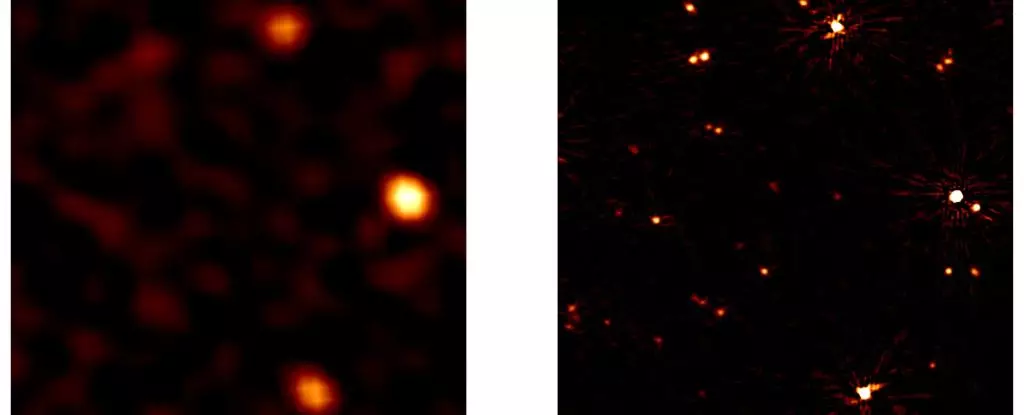The latest breakthrough in radio astronomy has provided us with unprecedented clarity in the lowest frequency range of the radio Universe. Utilizing a novel calibration technique, a team of astronomers has successfully captured sharp images of the radio Universe in the frequency range of 16-30 megahertz. This remarkable achievement was deemed unattainable in the past due to the disruptive interference caused by Earth’s ionosphere.
Astronomer Christian Groeneveld of Leiden University, leading the research, likened the experience to putting on glasses for the first time and finally seeing a clear image. The radio spectrum poses unique challenges as it consists of the longest waves, allowing them to penetrate Earth’s atmosphere. However, due to their faint signals and long wavelengths, large antennas are required for detection. As a result, space-based radio telescopes are not a cost-effective option for studying the radio sky. Most radio telescopes are stationed on Earth, limiting our ability to observe the decameter frequency range below 30 megahertz in fine detail.
The Role of the Ionosphere
The ionosphere has been a significant hurdle in capturing precise low-frequency radio waves. Its variable electron count causes phase delays, while interactions with magnetic fields distort radio wavefronts. This results in blurry and out-of-focus images, a longstanding issue in radio astronomy. The construction of LOFAR, the world’s largest radio telescope, promised improved resolution but was still hindered by ionospheric interference.
Revolutionizing Calibration Techniques
Groeneveld and his team devised a calibration strategy akin to adaptive optics used in optical telescopes. By using radio sources as calibration targets, they achieved sensitivity and resolution levels ten times greater than previous decameter observations. Although imperfections persist in the form of lines radiating around radio sources, the technique has significantly enhanced pinpointing accuracy.
The newfound precision has unveiled previously unseen details in high and low-frequency radio emissions. By studying galaxy clusters and distant black hole outbursts in low-frequency ranges, astronomers have gained valuable insights into these phenomena. The ability to observe black hole accretion in the early Universe has been greatly improved, opening new avenues for exploration.
Future Prospects
The team continues to process data with the goal of mapping the entire northern sky in the decameter range. Groeneveld remains optimistic about potential discoveries, stating, “There is, of course, a chance that we will eventually discover something unexpected.” The ongoing advancements in radio astronomy at the lowest frequencies hold promise for further groundbreaking revelations in the field.



Leave a Reply